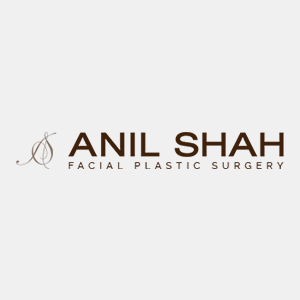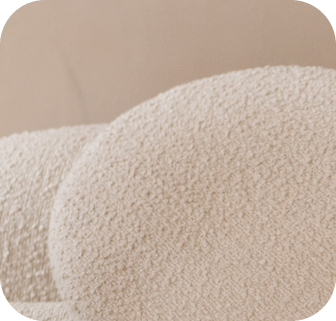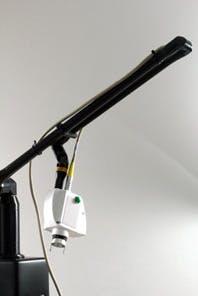
CO2 Laser
What is a CO2 laser?
This laser is made up of a gas mixture and composed of 4 elements: Carbon Dioxide, Helium, Nitrogen, and Hydrogen. Because CO2 lasers operate in the infrared, special materials are necessary for their construction.
This type of laser precisely removes thin layers of skin with minimal damage to your surrounding tissue. CO2 skin resurfacing is the most aggressive and produces the most dramatic results but also requires longer healing times. CO2 laser resurfacing uses very short pulsed light energy (known as ultra pulse) or continuous light beams that are delivered in a scanning pattern to remove thin layers of skin with minimal heat damage.
Carbon dioxide lasers are ablative lasers, working by essentially vaporizing the surface of the skin by targeting water molecules. This reduces scars, wrinkles and imperfections. Specifically, (CO2) lasers can be used to eliminate fine line on the cheeks, forehead and upper lip, smooth and tighten the skin on both the lower and upper eyelids, improve crow’s feet around the eyes, soften deep frown lines, flatten scar tissue, reduce stretch marks and hyperpigmentation, remove sun freckles and age spots, repair smoker’s lines and rejuvenate the skin by smoothing and polishing the complexion.
How does it work?
Carbon dioxide (CO2) laser resurfacing is the best known method today for improving skin’s appearance. Dr. Shah uses the new fractional carbon dioxide laser technology. He works wonders at rejuvenating the skin by improving overall skin quality. Brown spots caused by sun damage can be improved, skin pores reduced in size, skin texture irregularities can be smoothed out and the skin plumped up through collagen stimulation. With the skill that only years of experience can hone, Dr. Shah will recreate the skin that you remember from your youth.
The CO2 laser penetrates deeply, essentially removing the entire epidermis (the outer layer of the skin). Because of this, a CO2 laser will produce significant skin tightening and is more successful at removing deep wrinkles and scars. However, the intense heat tends to be more painful and can lighten the pigment of people with olive or dark skin.
The CO2 Laser is most commonly used for:
Una publicación compartida de Anil Shah MD (@shahaesthetics) el
- Wrinkles
- Superficial scars caused by acne, surgery, or trauma that are not growing or that are getting thicker.
- Color (pigment) changes or defects in the skin, such as liver spots (lentigines), port-wine stains, or café-au-lait spots.
- Lesions or growths in the upper layer of skin (such as actinic keratoses, rhinophyma, or birthmarks).
- Unwanted hair, by using heat from the laser to destroy the opening in the skin where hair grows
Are there any side effects?
- Swelling, itching, crusting, and tenderness.
- Redness
- Color (pigment) changes in the skin
- Skin irritation
- Bacterial, viral, or fungal infection of the skin
What’s my recovery like?
The CO2 laser has somewhat involved recovery, especially for the first 4-5 days. It is not that the patient is in severe pain; in fact some patients do not take any pain pills. The major hassle is being red and having Vaseline on one’s face for 4-5 days. After this period, the recovery improves dramatically. Like anything else in life, you get what you pay for. In this case not the money you pay, but the recovery you require. The results are usually extremely dramatic with aggressive CO2 laser resurfacing and no other therapy can touch them.
Although the CO2 laser is the gold standard for skin tightening and wrinkle reduction, it has the longest recovery time of up to 2 weeks. The CO2 laser causes redness for about one week and then the skin is pink in color for another several weeks. At 10-12 days make up may be applied. If the patient can return to work with a pink (looks like sunburn) face then most patients only need a week for recovery. If the patient is in a job situation where a pink face is not an option, then two weeks off may be necessary. A popular option is to have the procedure on a Friday, then take off the weekend, the next work week and the following weekend. This provides 9 days of recovery with only one week off of work.
Beginning the third day a gentle cleanser is used several times per day to wash the face and the Vaseline is continued. The face is very red for the first week and fades to pink for the next week.
At 10 to 12 days, the patient can wear makeup to cover the pinkness. Generally, by the third or fourth week, the majority of the pinkness is gone and the positive effects of the laser resurfacing can be appreciated. Some patients may stay a very light pink for several months, but this can be covered by make up and is always temporary. Research has shown that the improvement of wrinkles will continue to be seen as the skin continues to heal over the course of 18 months. So, for most patients, if they look good at several weeks, they will look better at several months.
How long does this laser treatment last?
You can expect to have long-lasting benefits from CO2 laser resurfacing. The more aggressive the treatment the greater and longer-lasting benefit you will receive.
Overview of the CO2 laser
The CO2 laser is a concentrated beam of light that creates a precision burn on the outer layers of the skin. A single pass with the laser will remove a very thin amount of skin, about the thickness of a human hair. Patients with minimal sun damage or wrinkles may only need a single pass. Patients with advanced sun damage, wrinkles or deep acne scars will need multiple passes. Every patient is different and there is no cookbook formula for the number of passes.
CO2 Laser Q & A
Q: WHAT IS CO2 LASER RESURFACING?
A: CO2 Laser Resurfacing is a laser treatment that addresses sun damaged skin, uneven pigmentation, wrinkle reduction, pore size reduction. CO2 Laser Resurfacing also targets loose skin while brightening under eye circles and helps with healing acne and acne scarring.
Q: HOW DOES CO2 LASER RESURFACING WORK?
A: CO2 Laser Skin Resurfacing uses energy to vaporize aged or damaged skin while also stimulating new collagen growth to the surrounding tissue.
Q: WHO ARE GOOD CANDIDATES FOR LASER CO2 RESURFACING?
A: The best candidates for CO2 Laser Resurfacing are patients with a light skin tone, skin types 1 through 3. Skin type can be determined by a doctor or aesthetician.
Q: WHAT AREA CAN BE TREATED WITH THE CO2 LASER?
A: The most common areas to treat with the CO2 Laser are the face, neck and hands. Other areas can be treated depending on the patients and their needs. Treatment areas will be discussed during a pretreatment consultation.
Q: HOW MANY LASER CO2 RESURFACING TREATMENTS WILL IT TAKE TO ADDRESS MY CONCERNS?
A: The amount of treatments is decided on an individual patient basis. It may take as little as one treatment or up to six treatments to obtain maximum results. The number of CO2 Laser treatments needed is discussed during a pretreatment consultation.
Q: HOW LONG DO CO2 LASER RESURFACING TREATMENTS TAKE?
A: The entire face can be treated by the CO2 Laser in as little as 30 minutes. The total treatment time can vary depending on topical application and the number of laser passes needed for treatment.
Q: WHAT CAN I EXPECT TO FEEL DURING A CO2 LASER RESURFACING TREATMENT?
A: Topical anesthetic is applied before the CO2 laser treatment to make the procedure virtually painless. Minimal discomfort may be felt but it is overall very tolerable.
Q: WHAT IS MORE EFFECTIVE C02 OR ERBIUM?
A: In general, C02 tends to be deeper and provide more robust changes. A study in 2010 compared the 2 technologies and found that C02 improved wrinkle depth by 20% versus 10% for Erbium.
Q: ARE LASERS EFFECTIVE IN SCAR TREATMENTS?
A: A recent study examined the effects of lasers on early scars and found improvement in the treated scars versus the untreated areas of the scars when using fractionated C02. In our practice, we treat have significant improvement in scars with C02 treatments for scars in making them much more difficult to see and feel. Fractionated C02 is often used for more mature scars while PDL or IPL can be used for reducing vascularity in early scars.
Q: WHAT SHOULD I DO TO PREPARE FOR MY CO2 LASER RESURFACING TREATMENT?
A: It is very important to avoid sun exposure pre CO2 laser treatment. This includes use of tanning beds and application of self-tanners. Patients should use a lightening cream, such as hydroquinone, 1-2 weeks prior to CO2 laser treatment. Patients are advised to start an antibiotic 1 day prior to CO2 laser treatment.
Q: SHOULD I EXPECT ANY DOWNTIME AFTER MY LASER CO2 RESURFACING TREATMENT?
A: Downtime post Laser CO2 Resurfacing treatments is dependent on a number of different factors. Downtime should be expected and can better be addressed during your pretreatment consultation.
Q: HOW SOON WILL I SEE RESULTS AFTER MY LASER CO2 TREATMENT AND HOW LONG WILL MY RESULTS LAST?
A: Immediately following your Laser CO2 Resurfacing treatment, your body will naturally start working by replacing aged tissue cells with new ones. Shortly after your procedure you will notice your skin to be visibly smoother, healthier, and younger looking. Laser CO2 Resurfacing results will continue to improve over the next 6 months.
Q: WHAT POST-TREATMENT CARE IS NEEDED FOLLOWING MY LASER CO2 PROCEDURE?
A: There is a list of post-procedure care instructions that will be reviewed at the time of your consultation. Patients will also receive a copy of take home instructions. These instructions include proper times to ice, apply ointment, a list of medication to take, and if and when you should contact a doctor.



